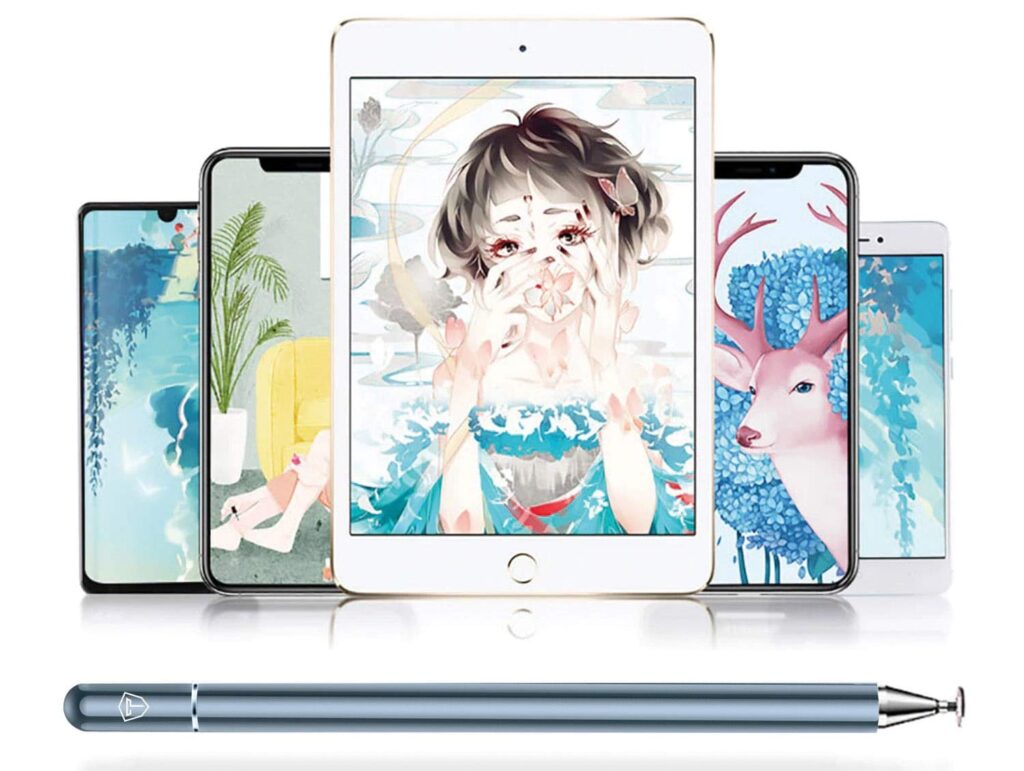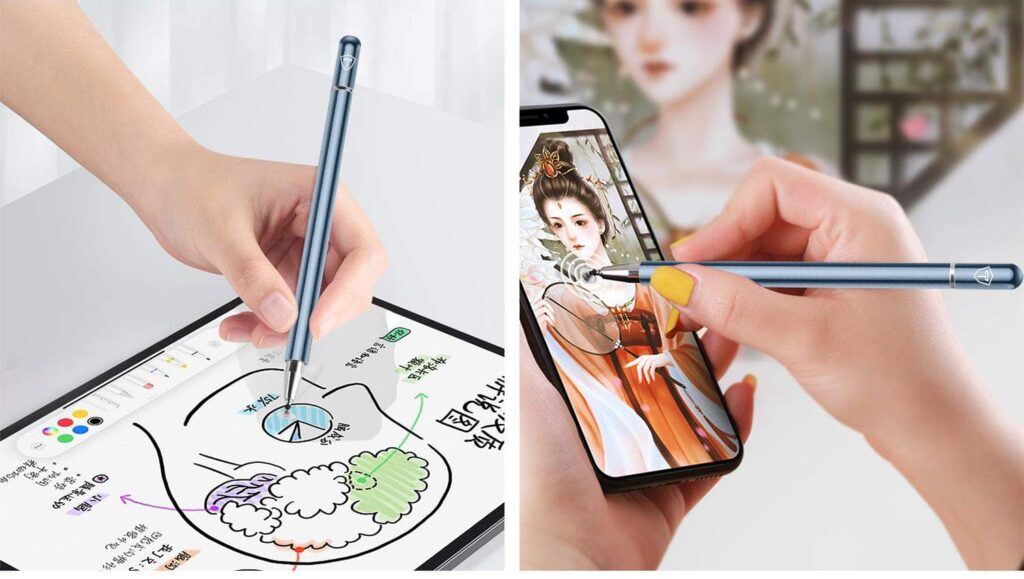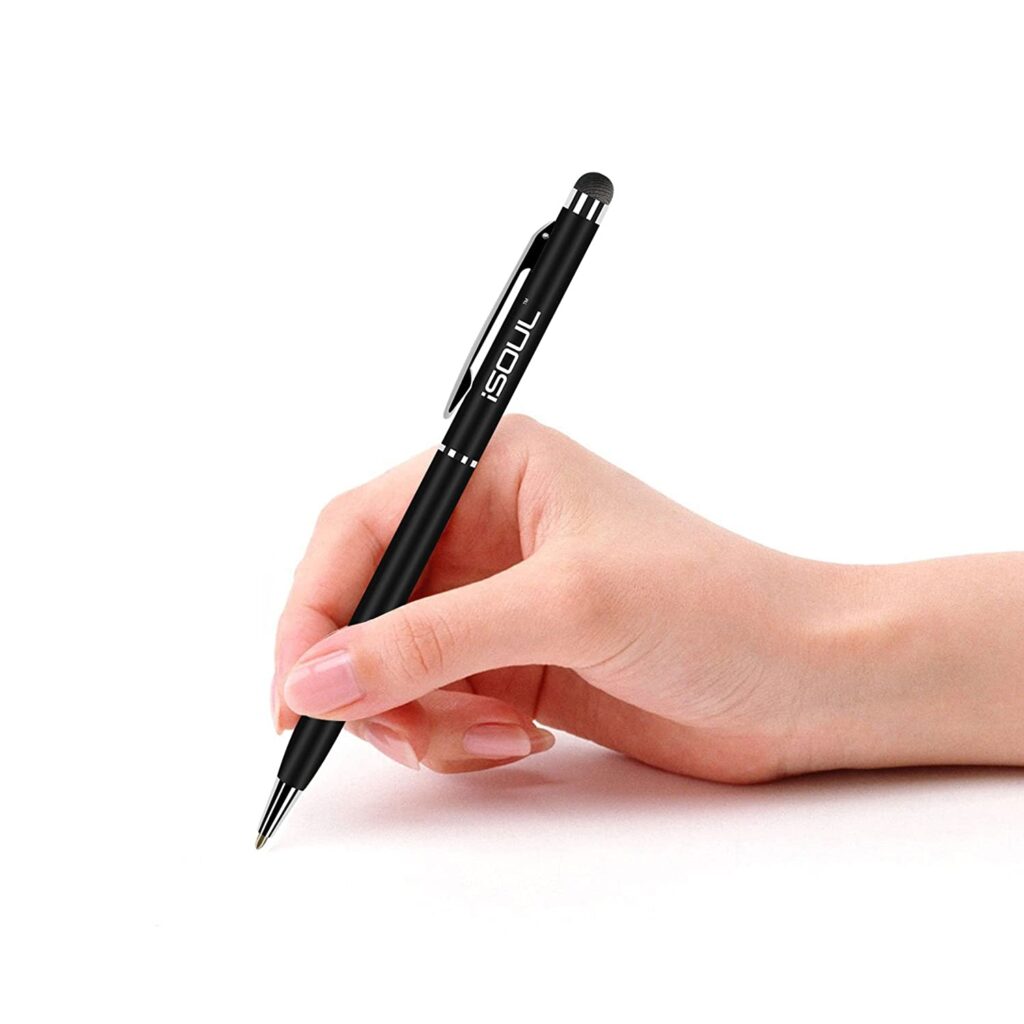The arrival of touch screen devices changed people’s note-taking and sketching habits profoundly. Suddenly, the fingertip reigned supreme. Despite that, users crave more precise interaction with their phones and tablets, especially for writing, drawing, sketching and illustrating – it’s not just about tapping in a phone number or selecting which email to view.The stylus pulls together various technologies that make using your device easier, more flexible and universally functional. For businesses, speed and accuracy are essential, with a stylus as the tool of the trade.
What is a Stylus?
Stylus is a pen-like object people use to point, swipe, sign, and draw on all manner of touchscreens and electronic devices. It is a instrument made pen-shaped with a round rubber piece that moves elementarily across touchscreen devices. Typically, It is used to navigate on a phone or tablet. You can use it by placing it on the touchscreen surface. Some include a pen incorporating 2 writing instruments into 1 tool.
Stylus and its uses

It is used with a tablet, smartphone or any device with a touchscreen where you could otherwise use your finger. Compared to using your finger, it, provides a smudge-free swiping and clicking experience for use on your phone, tablet or touchscreen device.
How does a stylus work?

The usage is quite straightforward .Use this pen by touching it to the touchscreen surface the same as you would use your finger, no issues. You can use a it to:
- draw in sketch apps
- write in apps for taking notes
- swipe for navigating within apps
- touch and hold to copy and paste
- tap on screen keyboards to select button choices
- make selections in dropdowns on forms
Why use a stylus instead of your finger?
- It will keep your screen free of fingerprints, not leaving smudge marks from your finger
- Also, it will not scratch your screen.
- Has a finer touch point than the tip of your finger providing better precision for small touch points like keys on the keyboard
What qualities are present in stylus?
If you need a high level of precision in the tip for fine work in sketch and drawing apps you will want to invest in a high quality stylus. However ,it is used for swiping and tapping the screen .
Do all styluses include pens?
No, you can purchase a stylus that has just the rubber tip and generally looks like a pen. However, these pens offer the best of both worlds, including both a pen and stylus in one writing instrument. Further, you can decide if you prefer the stylus in the pen tip or at the end of the pen.
Types of Stylus
Stylus is made of rubber or conductive foam. And is either “active†or “passive†(also known as capacitive). Let’s see the difference:
Active Stylus
An active stylus has a tip like a pen and includes internal electronic components. Features include memory, electronic erasers, and pressure sensitivity that allows lighter or heavier lines depending upon how much pressure you apply.
You can rest your palm on the screen without causing interference (this feature’s called “palm rejectionâ€). An active one is usually larger than a passive one because of the internal electronic components.
Passive/Capacitive Stylus
A passive stylus (also called a capacitive stylus) is a pen that acts just like a finger when touching a device screen. There is no communication between a passive stylus and a device. A device cannot tell the difference between a finger and a passive stylus.
Advanced functionality can only be achieved with an active pen.

What to look for when buying a stylus?
The right stylus can make a huge difference in the speed of your digital note taking. Stylus nibs, the part of the instrument that makes contact with the glass, are made of various materials from rubber and mesh to plastic discs. Some pricier ones are powered by batteries or Bluetooth, which can provide additional precision features such as pressure sensitivity and palm rejection. These type of pens are often controlled by apps, if the native device does not support all its features.
Design
: Consider whether it is retractable, has a cap or includes a clasp that lets you attach it to a case to avoid loss. The case should feel good – smooth but not too slick, grippy but not cramping.
Natural feel
A stylus must feel good in the hand and be comfortable to use for as long as you want. Beware of some, that cramp your fingers or hand or make your hand feel tired after only a short while.
Friction
Marking up your tablet or phone screen shouldn’t feel like a difficult errand. You should be able to form letters and draw lines easily, with the marks appearing immediately and without lag. Also you want just the right amount of friction between the stylus nib and the glass so that it does not drag or move so slickly that it skips, causing you to lose control. But, you don’t want to have to press too hard for it to register, or fail to work with your screen protector.
Balance and weight
Moderation is the key. A stylus should be of medium height so that it is easy to handle and doesn’t wobble in your hand. Weight should be evenly distributed throughout the body. If a stylus is too heavy, your hand will tire quickly, and if it’s too light, you might lose control.
Precision
Whether you’re handwriting text or sketching on a note, you want to be able to write consistently, without overlapping letters or erratic spacing. When you create a document, you don’t want the stylus to get creative with your content or force you to compensate for its poor performance.
Stylus History
Contrary to the tech-forward vibe of today’s modern stylus, the tool’s been around forever. Around 3,000 BCE the Sumerians of Sumer (in what was then Mesopotamia and is now the Persian Gulf region) used a reed stylus to write on wet clay tablets. They’d push the end of the cut reed into the clay tablet to make marks that formed one of the first written languages—Sumerian cuneiform script. The Sumerians are considered the creators of civilization, so leave it to them to be blazing trails for us in the stylus area as well.
Over time stylus materials have included metal, bone, ivory, feathers (quills), and wood. Though the composition has changed, the tool is still used in much the same way: to push, draw, or write (and swipe!) in the interest of communication and creative expression. A worthy goal and worthy tool as well!

















